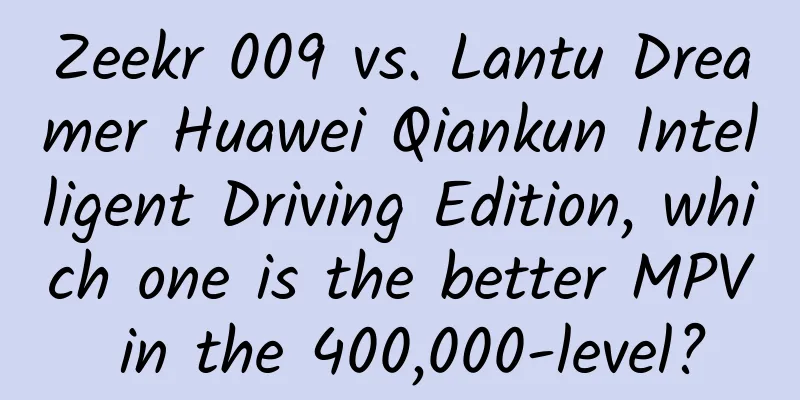The S8 that doesn't explode still can't be the savior. Users will teach Samsung a lesson.

|
On March 29, Samsung released its long-awaited flagship phones Galaxy S8 and S8+ in New York. Although we had known a little about them from previous leaks, the actual release of the phones still gave people a bright feeling. The biggest feature of the S8 series of mobile phones is its ultra-narrow bezel design. Samsung has made innovations as much as possible on the S8. The Bixby smart assistant with physical buttons can understand the user's voice commands. Through the Samsung DeX widget, the Samsung S8 can be used with a dock connected to a monitor keyboard. At the same time, the Samsung Gear VR virtual reality headset, Gear 360 camera, and headphones have also been updated. However, no one is perfect, and the same goes for mobile phones. Although the S8 series has added many new elements, it is still a question whether this new phone can once again compete with Apple's iPhone and win in the high-end mobile phone market. Even whether it can help the brand wipe out the negative impact brought by previous incidents such as Note 7 may not give Samsung enough confidence. Although the S8 series of mobile phones are cool enough, they obviously have many shortcomings. If we talk about the most eye-catching advantage of the Samsung S8 series, it must be the high screen-to-body ratio. But advantages can also become disadvantages. The dual-curved screen used by the Samsung Galaxy S8 series is still a unique 18.5:9 ratio, and the repair cost of the screen is much higher than that of ordinary mobile phones. Moreover, because it still uses a double-sided glass design, the problem of fingerprints cannot be avoided on the S8 series. In order to increase the screen-to-body ratio of the phone, Samsung moved the fingerprint recognition originally placed on the front to near the camera on the back. For users who don't like rear-mounted fingerprint recognition, this can even be a reason for them not to buy the S8. Moreover, because the distance to the camera is too close, there may be frequent problems of pressing the wrong button, and you may need to wipe the camera frequently when taking pictures. In addition, because it supports more identification and interaction methods, in addition to the earpiece, the Galaxy S8 has as many as 6 openings above the screen. Although it uses a black front panel design, it is still difficult to cover up the shabby look. Of course, because the front button design is cancelled, users have to endure the pain of virtual buttons. In terms of battery capacity, the S8+ uses a 6.2-inch elongated screen with an aspect ratio of 18.5:9, which is roughly equivalent to a 6-inch normal screen (16:9). The S8's 5.8-inch elongated screen is roughly equivalent to a 5.5-inch normal screen. In other words, this is a combination of a 5.5-inch model with a 3000mah battery and a 6-inch model with a 3500mah battery. With a resolution of over 2k, the battery life is probably a whole level lower than that of traditional models of similar size. Although the Galaxy S series has never been a product line that emphasizes battery life, this generation may have a more obvious shortcoming. This design that emphasizes visual impact but sacrifices battery life is unlikely to please a market that is used to large batteries. Not only that, perhaps because it has not yet emerged from the shadow of the Note 7, the Samsung Galaxy S8 series has adopted a conservative strategy in terms of fast charging, and continues to come standard with a 9V/1.67A adapter, which may be a nightmare for users who want fast charging. The smoke of the Note7 incident has not yet dissipated, Samsung has over-exerted itself Since the Note 7 explosion last year, Samsung's market share has been declining. In the fourth quarter of 2016, it was even squeezed out of the top spot by Apple. The explosion of Note 7 caused the premature death of this flagship product, which was originally designed to compete with iPhone 7. This premature death not only caused Samsung to lose its flagship product in the second half of 2016, but also suffered a loss of more than 20 billion US dollars. According to Caixin, the Note 7 explosion and the anti-Korea sentiment of some people in China affected the sales of Samsung's entire mobile phones. At the lowest point, only about 1 million units were sold in a month. It also caused Samsung to encounter a brand trust crisis and miss a strategic opportunity period, falling into an extremely passive situation. Until 24 hours before the S8 launch conference, Samsung was still plagued by negative news. In addition to a fire in a retail store in Singapore, foreign media broke the news that it forced users to sign a non-disclosure agreement during after-sales service. A man bought a Samsung S7 Edge phone less than a week ago and it overheated and broke down. The man went to Samsung after-sales service, but was asked to sign a confidentiality agreement, and the prerequisite for replacing a new phone was to keep it a secret. Everyone knows that Samsung wants to win back the favor of users with the S8 series of mobile phones. We can also see that Samsung has put all its efforts into the S8 series of mobile phones and brought many innovations to users. However, the only thing that can make people shine is the high screen-to-body ratio. Other innovations do not really hit the pain points of users. In order to achieve a high screen-to-body ratio, the simplest and quickest fingerprint unlocking function was even moved near the camera, which made many users have a bad experience. It can be seen that Samsung has put too much effort into the S8 series and wants to regain the market as soon as possible with the innovation of the S8 series. However, although there is innovation, everything else has been ignored. User reputation has been overdrawn to the limit, and it is difficult to win back the market just by relying on S8 Looking back at the development history of Samsung mobile phones, it can not only be seen as the development history of Android mobile phones, but also a "documentary" that shows the quality problems of Android mobile phones. Various product quality issues run through each generation of Samsung's Galaxy S and Note "dual flagship" products, from the S1 "screen burn-in gate", S2 "motherboard gate", S3 and Note 2 "font gate", S4 "overheating", S5 "crack gate", S6 "gravity gate", to the latest S7 "vertical screen line gate", NOTE7 "explosion gate", etc. We can simply call Samsung mobile phones "textbooks of high-end mobile phone quality issues", and the occurrence of these incidents has also seriously overdrawn Samsung's reputation. Trying to use S8 to make amends can only be a drop in the bucket. What is even more frightening for Samsung is that with the combined effect of these "gates" and the steady development of its competitors, consumers have more and more reasons not to choose Samsung phones. Since 2011, Samsung has dominated the Chinese mobile phone market, with an overwhelming advantage for several years. However, in the third quarter of 2014, Samsung lost to Xiaomi by 2.9 percentage points, giving up the title of No. 1 in the Chinese market for the first time. In the fourth quarter of the same year, it was defeated by Apple again. Then in the first quarter of 2015, Samsung was surpassed by Huawei and fell to fourth place. Then, after the end of 2015, Samsung was squeezed out of the top five. Then in 2016, OPPO, vivo, and others began to make efforts, and Samsung's share in China became smaller and smaller. Finally, the Note7 exploded and the subsequent handling was improper, and both the brand image and market sales suffered a "heavy blow". Samsung spent a lot of energy on testing and delayed the release of the S8 to ensure that there would be no problems with the S8. However, in the market, high-end products rely on "brand" as one of the competitive advantages. Samsung's damaged brand influence cannot be restored in one or two years, and it is becoming increasingly difficult to impact Apple. On the other hand, Chinese manufacturers are catching up faster and faster. The recent Huawei P10 is already completely close to Samsung in pricing. OPPO and vivo are growing at an astonishing rate and are moving towards internationalization. A possible outcome is that Samsung's failure in the Chinese market will be replicated around the world as Chinese manufacturers go global. Xiaomi is entering India with its low-end products, and OPPO is entering Thailand and Taiwan with its high-end products. Samsung is certainly working hard, but smartphone technology is too mature, and it is difficult for Samsung to make truly revolutionary differentiation in its terminals. In addition, the Samsung Group is currently in turmoil. Its leader Lee Jae-yong has been detained by the South Korean police in connection with the Park Geun-hye case. In addition, the tense relations between China and South Korea will affect Samsung's reputation in the domestic and even foreign markets. Therefore, the dazzling Galaxy S8 may really become the next trend-setter in the evolution of smartphones, but what the S8 cannot change is the dilemma of the Samsung brand, which is surrounded by enemies on all sides. As a winner of Toutiao's Qingyun Plan and Baijiahao's Bai+ Plan, the 2019 Baidu Digital Author of the Year, the Baijiahao's Most Popular Author in the Technology Field, the 2019 Sogou Technology and Culture Author, and the 2021 Baijiahao Quarterly Influential Creator, he has won many awards, including the 2013 Sohu Best Industry Media Person, the 2015 China New Media Entrepreneurship Competition Beijing Third Place, the 2015 Guangmang Experience Award, the 2015 China New Media Entrepreneurship Competition Finals Third Place, and the 2018 Baidu Dynamic Annual Powerful Celebrity. |
<<: Sony's high-tech driverless car is unveiled: Is this a walking 4K TV?
Recommend
How to write an excellent event planning and implementation plan?
Google is in talks with Chinese internet company N...
How to analyze brand marketing from the perspective of “people, goods and places”?
With the booming development of new consumer bran...
4 channels and 5 tools for Taobao promotion
Four major channels: official Taobao activities, ...
Developers must know: Google made a difficult decision
Google has made a difficult decision: to deprecat...
Did a famous actor die of "heat shock"? Doctors remind: It is easy to happen in winter, so be careful when taking a bath
Recently, Japanese actress Miho Nakayama was foun...
What should I do if I want to quickly sell Didi’s friend links?
Click Sell Friendly Links → My Website page, clic...
Electric Technology Car News: In an era dominated by high-priced sports cars, Camaro insists on low prices
There are a thousand Hamlets in the eyes of a tho...
Tips for creating advertising landing pages!
In the customer acquisition process, in addition ...
The most practical Tieba traffic diversion methods and techniques on the entire network in 2019!
A large number of account merchants have died thi...
Predicting Flu Trends: Harder Than You Think
Even if you were given a forecast now about the t...
Do cats really care about you? Now we have a conclusion
Hello, this is Science Popularization China. We o...
How to cook a chicken with bare hands? Beat the chicken for 13 hours and 37 minutes
As a good friend of mankind, chickens are of grea...
Is there nitrite in hot pot? 7 tips for eating hot pot healthily
There was a food safety news recently, saying tha...
The Economist: In January 2024, the rise of DeepSeek triggered a boom in China's AI industry, and the Hang Seng Technology Index rose by more than 40%.
The Economist published an article titled "T...
Next year, Google Chrome will stop adapting to some systems
You may like your Windows XP very much because it...









